The Therme Spa at Ontario Place in Toronto is a carbon bomb that must be defused
Every tonne of CO2 emissions adds to global warming, and these buildings have many tonnes of glass, concrete and aluminum.
This was written before Doug Ford backtracked on the Greenbelt. This has to be next.
Update 2: I am advised that my math was wrong and it is worse than I thought, revising numbers.
On November 11, 2021, the British Minister of State for Housing finally killed a proposal to build “the Tulip,” described as “a mixed-use visitor attraction” designed by Foster + Partners. It included some educational uses and a viewing gallery, but I described it as a “restaurant on a stick.”
Among the reasons for the rejection:
"The Secretary of State has taken into account that the schemes would achieve a BREEAM [UK version of LEED] rating of outstanding and acknowledges the enormous lengths to which F+P have gone to make the construction and operation of the scheme as environmentally responsible as possible. However, overall the Secretary of State agrees with the Inspector that the extensive measures that would be taken to minimise carbon emissions during construction would not outweigh the highly unsustainable concept of using vast quantities of reinforced concrete for the foundations and lift shaft to transport visitors to as high a level as possible to enjoy a view."
Later in the report, planning inspector David Nicholson notes:
"Although considerable efforts have been made to adopt all available sustainability techniques to make the construction and operation of the scheme as sustainable as possible, fulfilling the brief with a tall, reinforced concrete lift shaft, would result in a scheme with very high embodied energy and an unsustainable whole life-cycle."
This is believed to be the first new building project cancelled because of what are called embodied carbon emissions, or as I prefer to call them, upfront carbon emissions, since they are not embodied in the materials, but emitted upfront and are in the atmosphere.
Meanwhile, back in Toronto, the Ford government is pushing a 22,000 41,000-square-meter spa constructed of untold quantities of concrete, aluminum, steel and glass. The recent design change to add trees to the roof means even more concrete to support all the soil and trees.
We have no idea how much material is going into this building, but these are all materials that are very high in upfront carbon, the emissions released in the mining, manufacturing, transporting and installing before the building is even opened.
With the help of Kelly Alvarez Doran, I did a rough estimate for the underground parking garage that the Province is building, and wrote earlier in a post Underground parking garages are not "sustainable":
The carbon per parking space calculation should be done for the $650 million underground garage being built by taxpayers all over Ontario to serve the silly spa being built at Ontario Place. Its 2118 parking spaces will probably have a footprint north of 85,000 tonnes of CO2, equivalent to putting Doug Ford in a car and driving him to Mars, which would be a good plan.
The science of upfront carbon is relatively new, so there are few benchmarks, and there is no category in building uses for “spa.” However, it is likely to be an outlier because of the big spans, and volumes and amount of aluminum and glass, one of the most carbon-intense building materials on the market. A wild guess might be 3,000 kilograms per square meter. At 41,000 square meters, that totals 123 million kilograms of CO2 emissions, roughly the equivalent of running 30,000 cars for a year. (The City of Toronto requires the reporting of Embodied Carbon, but I don’t know if they have demanded it here. They should!)
This is problematic because, as the IPCC notes, every tonne of CO2 emissions adds to global warming. This is why building projects are being cancelled and reconsidered around the world.
This is why a new approach to design is taking hold, where everything is about reducing upfront carbon emissions. Obviously, the lowest carbon solution is to build nothing, which should be considered here. Like Norman Foster’s restaurant-on-a-stick, the Therme spa is not a hospital or truly necessary use; we will get along fine without it. They could build less and could maximize the use of existing assets if it were somewhere else, perhaps inside the Hearn generating station shell, where they could get the hot water they need from the gas plant next door.
They could build clever; some swimming pools are being enclosed with mass timber structures, like this one by Hawkins/Brown, but it will be smaller, and there won’t be trees on the roof.
We haven’t even touched on operating carbon emissions that will come from the vast amounts of natural gas and electricity that will be needed to keep the spa warm in winter. The full life-cycle carbon emissions from this building will be astonishing. A Finnish study from 2008 looked at a spa and found:
“The high energy consumption in swimming baths presents a great challenge for energy conservation in both new construction and renovation. This paper presents a study where the energy consumption of a Finnish recently built public swimming bath was calculated and analyzed. The annual heating energy consumption of the studied swimming bath was 396 kWh/gross-floor-m2 and the annual electric energy consumption was 240 kWh. The heating of water accounted for 56 percent of the heating energy. The major part of the electric energy was consumed by the sauna stoves and the wet steam bath (31 %), and heating pumps and water elements (30 %).”
Then there are the trees. I received an email this morning from an activist fighting to save the 800+ trees that are about to be cleared from the site to make way for the spa.
“The Minister of Infrastructure announced last week that a “significant number of trees will be coming down in the coming weeks” at OP. That means they are going to take out all the trees on the West Island. She said two trees would be planted for every one that was going to be removed. First of all: where are they going to put them all, given that so much of the site is covered in paving and the building? Second, two seedlings don’t do the equivalent of a single 50+ year old tree. In fact, I don’t think 100 seedlings would do the job of a single 50-year-old tree until 10 or 20 years later.”
But there is another way of looking at the carbon stored in trees. Your average 40-year-old 1000 kg tree sucked in 871 kg of carbon dioxide over its life. Forget planting two trees to compensate for the ones chopped down; to compensate for the 66 million kg emitted building the spa, one would have to plant 141,216 trees and grow them for 40 years.
I have noted before that when you look at the world through the lens of upfront carbon, it changes everything. (It’s in the second paragraph of my new book!) It means you don’t build new Science Centres when you already have one, you don’t build parking garages, and you don’t build carbon bombs like the Therme spa.
In the UK, they killed Norman Foster’s Tulip because of upfront carbon, and Diamond Schmitt is no Foster + Partners. In Ontario, we have to kill the Therme Spa for the same reason: every kilogram of carbon emissions counts.



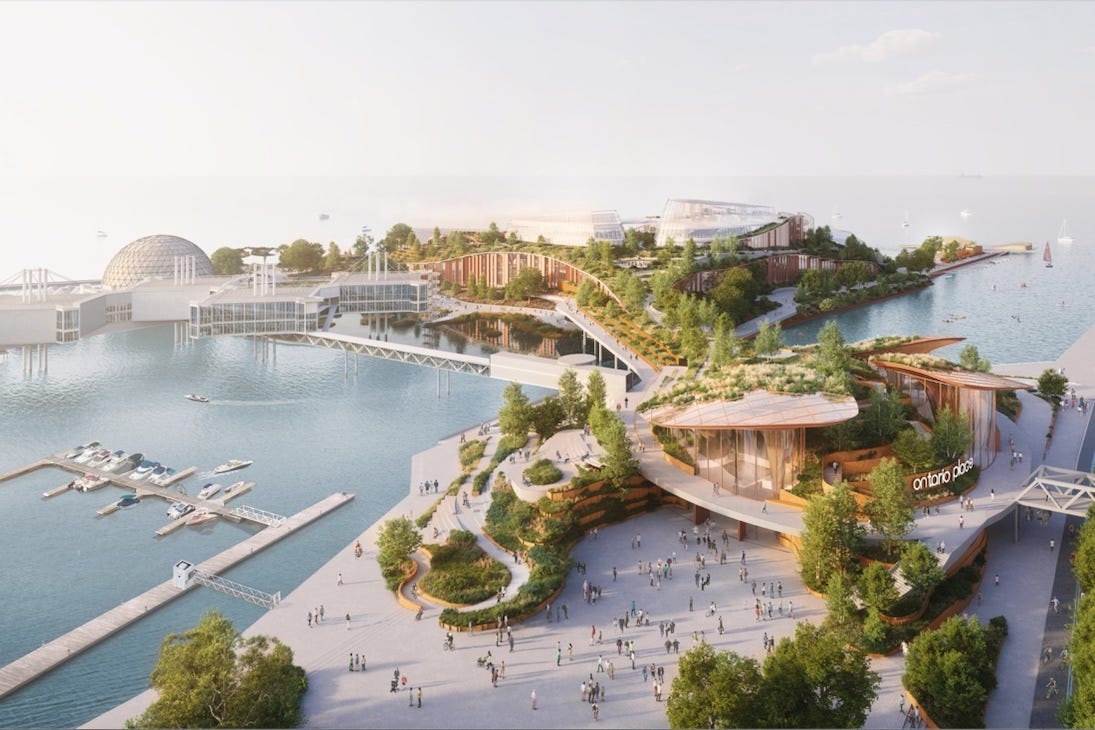
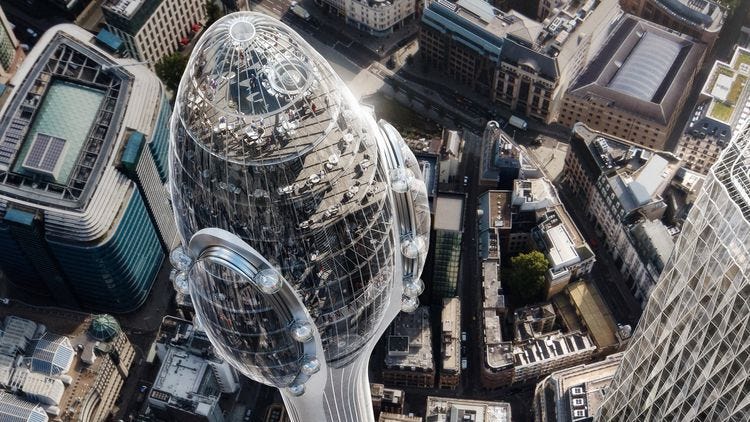
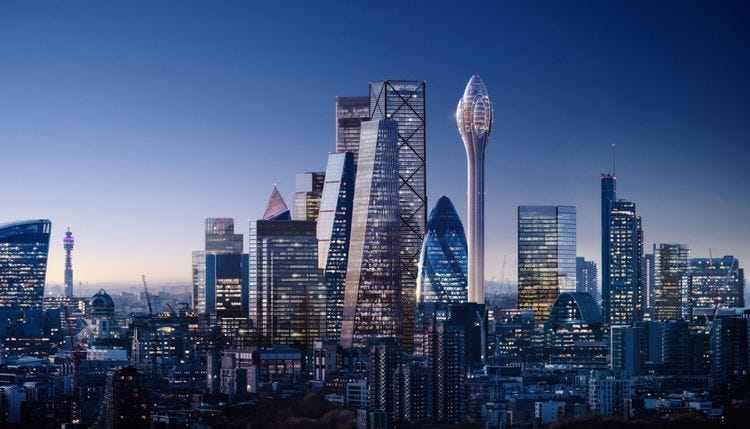

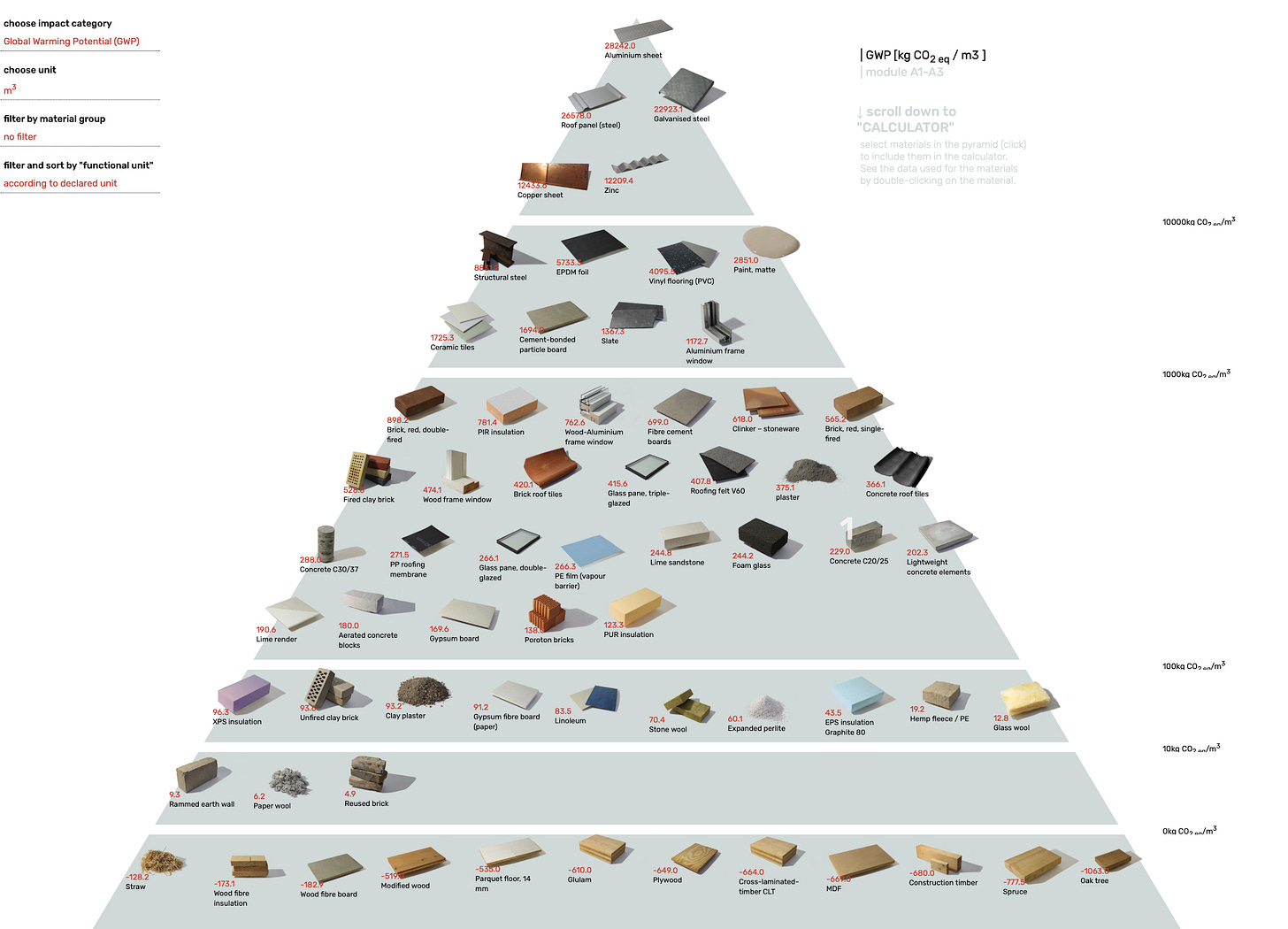
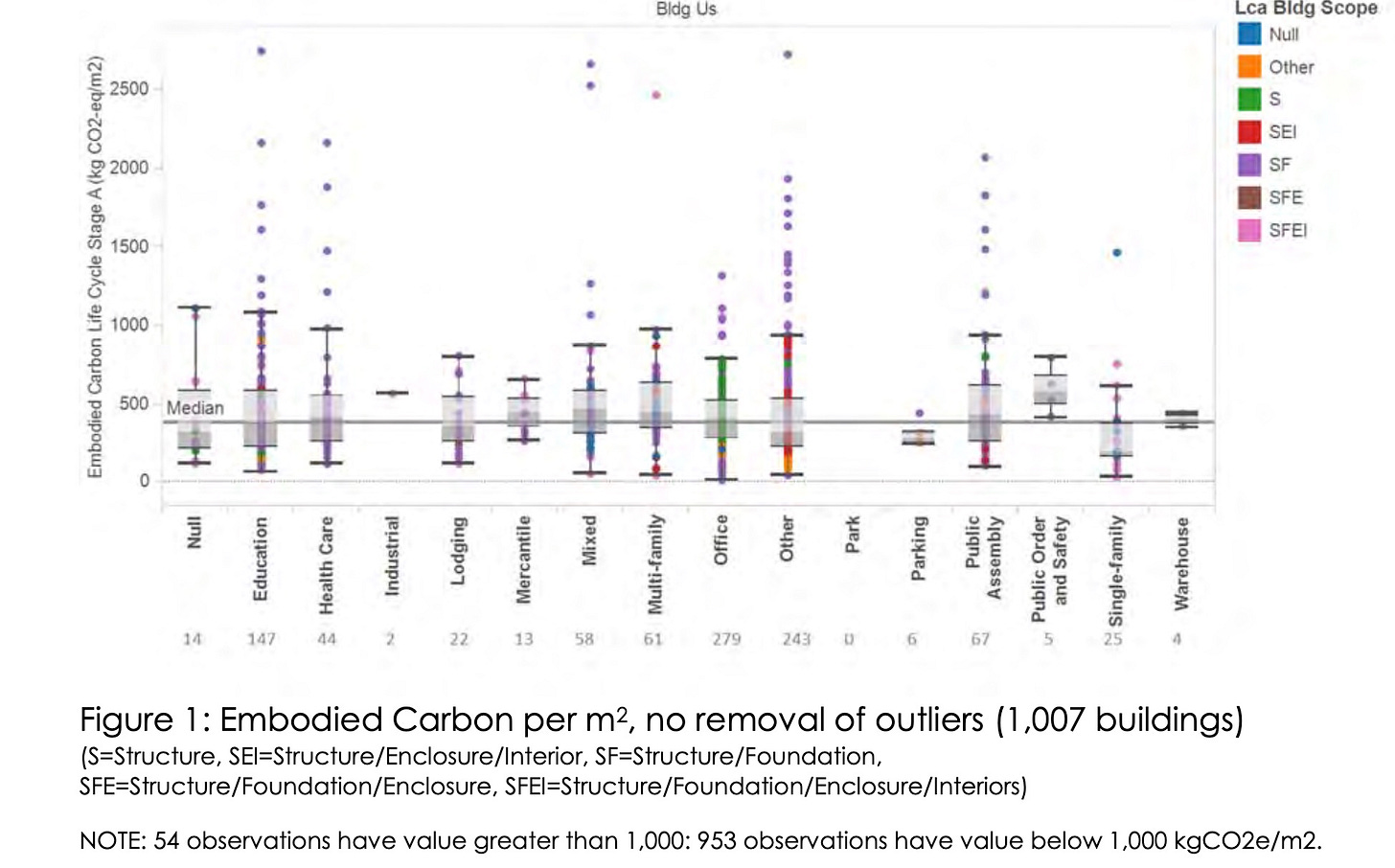


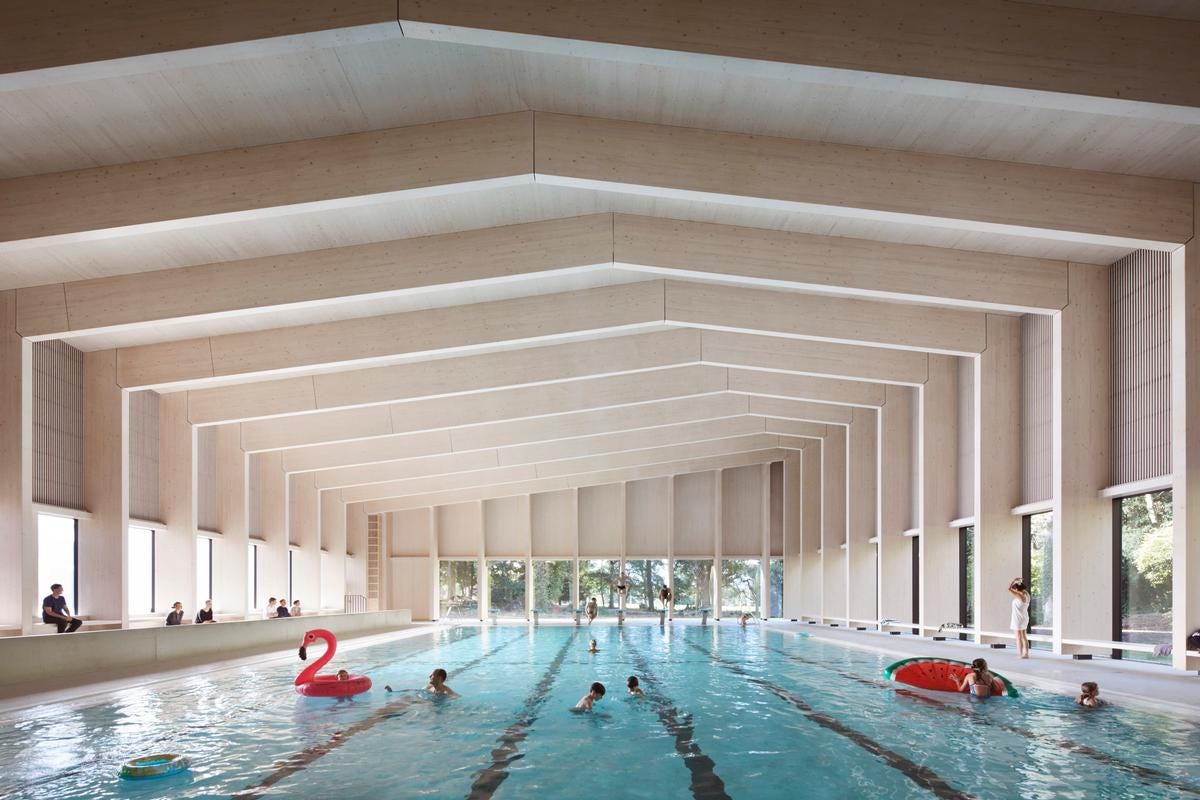
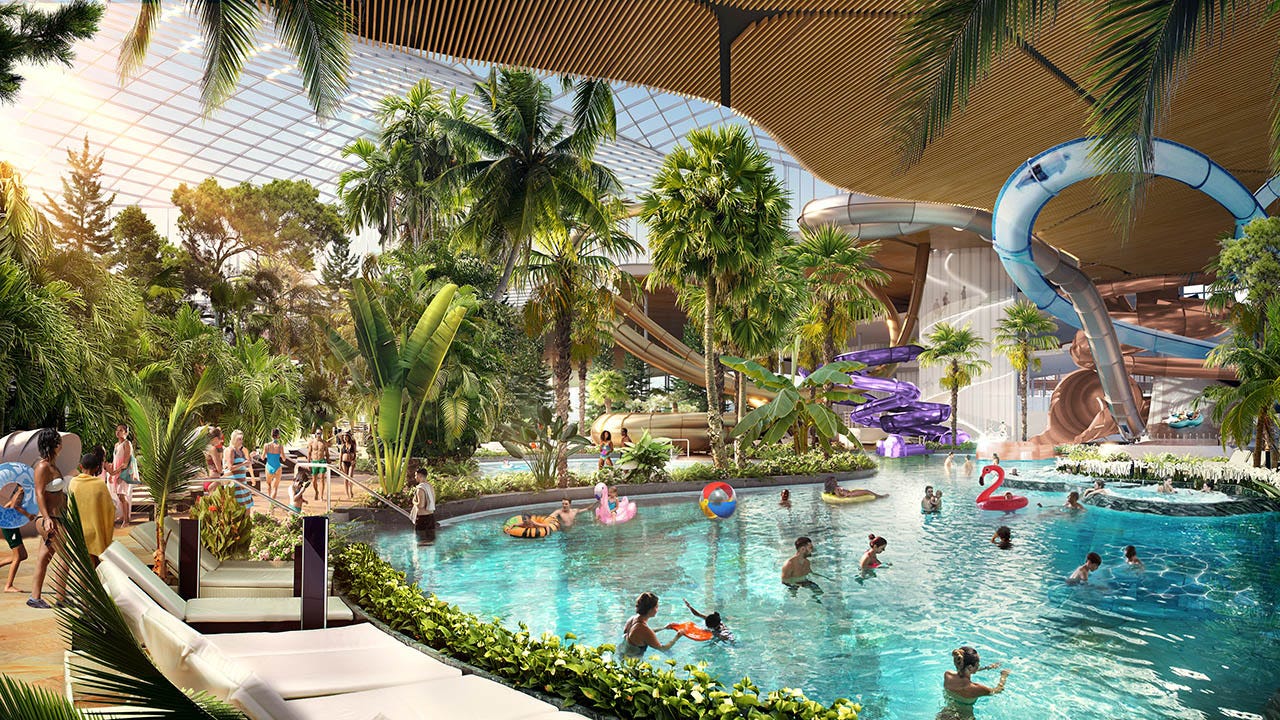
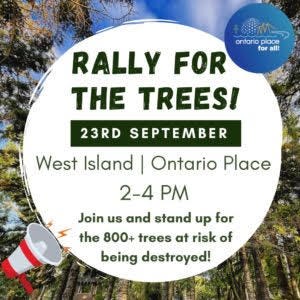

Fabulous article. Suggested correction: at the public consultation Therme consultants said the modified size is 41,000 m2.
Great article Lloyd, thanks so much. If you go to the west island today you will find Margie Zeidler and Steven Evans taking pictures of individuals with a favourite tree. I was there yesterday. Go get a portrait taken if you are in Toronto.